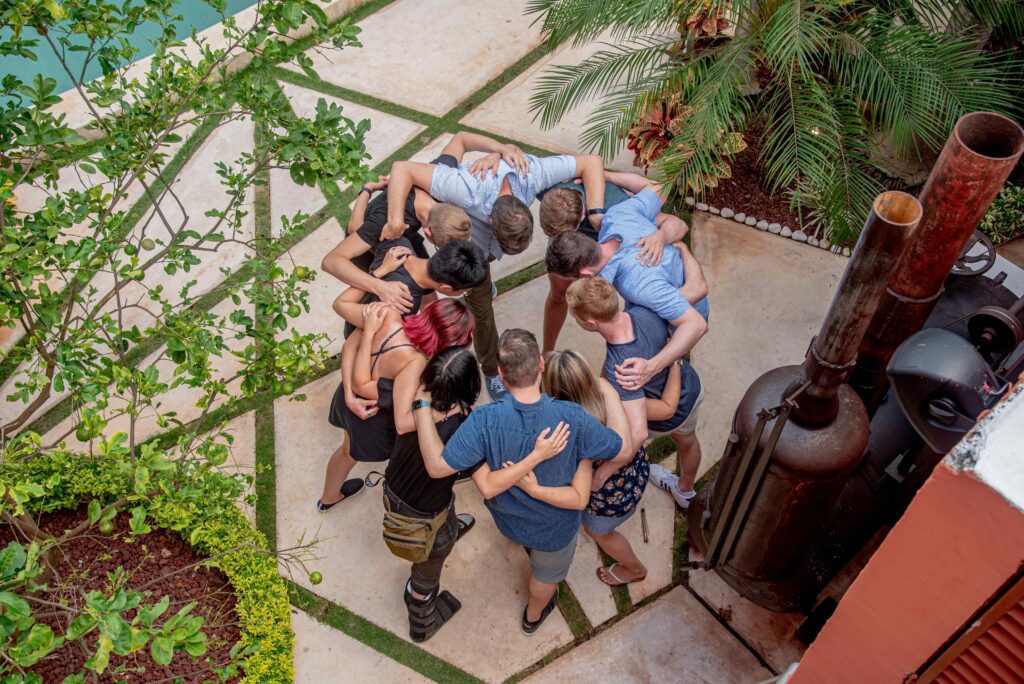Mastering DSDM Timeboxing: Boosting Project Efficiency and Success
Amidst the ever-shifting terrain of project management, where the pressure of deadlines mingles with the haze of uncertainties, a groundbreaking approach has surfaced. This approach not only confronts these challenges head-on but thrives within them. Welcome to the realm of Timeboxing – an influential technique seamlessly integrated into the fabric of the Dynamic Systems Development Method (DSDM). Through this, a novel age of efficiency and precision has been ignited.
Within the confines of this piece, we will plunge into the depths of Timeboxing as it exists within the framework of DSDM. As we unravel its mystique, we will uncover how it reshapes the entire trajectory of conceptualising, planning, and executing projects. So, fasten your seatbelts as we embark on a voyage that will divulge the secrets of transforming time into an invaluable ally, ensuring that each passing moment propels the ultimate triumph of your endeavours.
What is Timeboxing in DSDM?
Within the realm of DSDM, a Timebox is defined as a predetermined time span culminating in the accomplishment of a particular objective. This objective typically revolves around the attainment of one or more deliverables. This deliberate structure guarantees that a Timebox is dedicated to achieving substantial and meaningful outcomes, rather than mere busyness.
As a Timebox concludes, its progress and effectiveness are evaluated based on the actualization of products, which encompass requirements or various deliverables, as opposed to the mere completion of a sequence of tasks.
How Long Should a Timebox Be?

The optimal duration for a Timebox typically falls within the range of two to four weeks. This timeframe strikes a balance – it’s lengthy enough to accomplish meaningful results while maintaining the Solution Development Team’s concentration.
In cases of exceedingly brief and swiftly evolving projects, a Timebox can even be condensed to a single day. In rare instances, a Timebox could extend as far as six weeks. However, elongated Timeboxes bear the drawback of potentially causing the team to lose their focus.
By embracing an iterative approach, progressing through a sequence of concise Timeboxes, the team gains the advantage of more frequent evaluations of their authentic advancement – “What have we managed to deliver?” If their advancement falls short of their internal anticipations, this serves as an early indicator of challenges, granting an initial opportunity to tackle these issues head-on.
What are the Benefits of Timeboxing in DSDM?
Timeboxing holds significant importance within your project due to its ability to:
- Foster Laser-Focused Goals: By enforcing the delineation of precise objectives for each timebox, Timeboxing establishes a clear sense of purpose. This alignment among your team eradicates ambiguity, propelling purposeful actions.
- Enhance Team Productivity: Operating within a set timeframe cultivates discipline and motivation among your team members. The temporal constraints drive efficient decision-making, curbing procrastination, and nurturing a culture of productivity.
- Embrace Iterative Progress: Aligned seamlessly with the philosophy of DSDM, Timeboxing complements the iterative approach. Dividing your project into manageable timeboxes creates natural junctures for introspection, adaptation, and enhancement.
- Mitigate Scope Creep: Inherently, Timeboxing restricts the scope of each iteration, diminishing the risk of feature proliferation that can derail projects. This controlled scope encourages concentrated efforts on delivering fundamental components.
- Enhance Communication: Timeboxing stimulates frequent check-ins and updates. The ongoing communication amid team members guarantees a shared understanding, streamlining the resolution of challenges and the assimilation of alterations.
- Prioritize Deliverables: Timeboxing compels a systematic prioritisation of tasks, ensuring that high-impact elements take precedence. This results-centric approach maximises the value conveyed to stakeholders with every iteration.
- Build Incremental Value: Aligned with the essence of DSDM, which revolves around incremental value for stakeholders, Timeboxing is a perfect fit. It permits the earlier release of functional components and the collection of feedback at an earlier stage.
- Adapt to Change: Given the fast-paced nature of projects, change is an inevitability. Timeboxing equips you with the adaptability to accommodate changes in between iterations, offering a structured method for integrating fresh insights.
- Boost Stakeholder Engagement: The consistent and tangible progress enabled by Timeboxing sustains stakeholder involvement and awareness. After each timebox, they witness discernible advancements, fostering confidence in the project’s trajectory.
- Celebrate Milestones: Concluded timeboxes morph into celebratory milestones. These accomplishments elevate team morale, providing a sense of achievement that fuels eagerness for the subsequent iteration.
Standups and Timeboxes

A fundamental component inherent in all Timeboxes, regardless of the chosen approach, is the Daily Stand-up. This session serves as a platform for the Solution Development Team to exchange updates, tackle challenges, and recalibrate as necessary on a daily basis. This ongoing communication is equally vital in the informal interactions among team members throughout the day. Within the framework of the Stand-up, the Solution Development Team gathers daily to deliberate on their advancements, obstacles, and forthcoming tasks.
Guided by the Team Leader, this swift and focused meeting cultivates transparency and collaborative synergy. Active participants encompass all team members, along with Business Ambassador(s), and pertinent Business and Technical Advisors. The Stand-up adheres to a concise structure where each participant outlines their achievements since the previous meeting, upcoming tasks, and any hurdles impeding their progress. With a predetermined timeframe, often around 15 minutes, it encourages succinctness and a relaxed atmosphere, commonly conducted in a circular arrangement around the Team Board. To accommodate remote teams, Stand-ups can be conducted via teleconferences, adhering to a structured format that ensures clarity.
Contributors like the Business Visionary, Project Manager, and Technical Coordinator might also partake in these meetings for their respective inputs. Stand-ups are instrumental in identifying issues for prompt resolution, relegating more intricate matters for offline discussions. This practice not only aids in monitoring progress and ensuring punctual deliverables within Timeboxes but also functions as a versatile tool extending beyond Timeboxes, ingraining consistent communication into the team’s modus operandi.
You can learn more about standups and Scrum in our complete guide here.
Types of Timeboxes in DSDM
The initiation and conclusion of each timebox are marked by a kick-off and close-out, respectively. Furthermore, within the realm of DSDM, two distinct timebox styles are acknowledged:
- Structured Timebox: This adheres to the structured framework outlined by DSDM.
- Free Format Timebox: This offers a more flexible approach that allows adaptation based on project-specific requirements.
The decision regarding the style of timebox to employ can be influenced by various factors. These factors encompass the accessibility of the Business Ambassador and other essential business roles, as well as the nature of the product being developed.
DSDM Structured Timeboxes
This structured framework is notably valuable for orchestrating the presence of the Business Ambassador in particular planning, feedback, and review sessions. Alongside these designated interactions, a daily engagement with business operations, such as attending Daily Stand-ups and promptly addressing urgent inquiries, is also anticipated. By extending this framework into upcoming Timeboxes, the prospect of coordinating Timebox control points (kick-off, the three reviews, close-out) across all Timeboxes within the Project Increment becomes feasible. This can be particularly beneficial when a Business Ambassador grapples with a demanding schedule.
The DSDM structured Timebox further supplies a foundational plan for the Timebox, with a focus on aligning Iterative Development activities within it to achieve precision in the business solution. With this framework, the Solution Development Team gains a clear sense of milestones. They understand that their preliminary investigations should conclude by the end of the first week in a three-week Timebox, and they should be on the cusp of finalising their product by the close of the second week.
In this structure, the concluding days are dedicated to meticulous refinements and adjustments, ensuring a smooth culmination of the Timebox. Throughout the duration of the DSDM structured Timebox, the complete Solution Development Team maintains a comprehensive view of the progress, offering early notifications if the overarching Timebox objectives appear jeopardised.
A DSDM structured Timebox is constructed around three key phases:
- Investigation
- Refinement
- Consolidation
Kick-Off
The objective of the Timebox Kick-off is to:
- Examine the Timebox objectives, as outlined in the Delivery Plan, to foster a shared comprehension of the desired achievements.
- Ascertain the feasibility of delivering what was initially envisaged during the Foundation phase within the allocated Timebox period. If adjustments are required due to changed circumstances, re-planning is undertaken.
- Whenever feasible, establish the acceptance criteria for each product slated for delivery within the Timebox.
- If intricate details can’t be agreed upon during the Timebox Kick-off, the agreement can be postponed until the culmination of the Investigation phase. However, in this instance, high-level acceptance criteria must be set until additional specifics are available. (Commencing a Timebox without a grasp of acceptance criteria poses substantial risks.)
- Evaluate the availability of the entire Solution Development Team, including business roles, to actively partake in Timebox activities during this phase. Commitment to delivery is aligned with pre-established resource allocations at the project level. Nonetheless, individual availability can fluctuate from one Timebox to another, potentially due to scheduled leaves of absence.
- Identify any recognised dependencies, whether internal or external, that could potentially impact the Timebox. The Solution Development Team’s dependencies might include:
- Internal dependencies: Other Solution Development Teams working in parallel Timeboxes within the same project.
- External dependencies: Individuals or projects beyond the team’s direct control that could influence the project.
The Timebox Kick-off ought to be attended by the complete Solution Development Team, encompassing Business Ambassador(s), who will participate in the Timebox activities. Additionally, the presence of the Project Manager, Technical Coordinator, and Business Visionary is also crucial.
Investigation
The purpose of the Investigation phase is to establish a robust groundwork for the subsequent Refinement phase. This involves further clarifying the requirements and their associated acceptance criteria. During the Investigation phase, the Solution Development Team collaboratively delves into the specifics of the requirements, reaching an agreement on how these requirements will be addressed as part of the ongoing Evolving Solution. These detailed insights may manifest as acceptance criteria tied to individual requirements or as elaborations within the Prioritised Requirements List.
Validation of the accuracy and coverage of the scope for each requirement’s acceptance criteria is crucial. When feasible, an initial model or prototype of the solution is developed, serving to illustrate a comprehensive understanding of the requirements and granting early visibility of the solution for assessment and feedback.
Throughout the Investigation phase, the entire team should collaborate on the complete set of requirements established for the Timebox during the kick-off. This comprehensive understanding of the task’s details and priorities is essential for informed decision-making later on, especially concerning the potential exclusion of lower-priority requirements if necessary.
Although some preliminary testing might be viable and even encouraged during this phase, the central focus of testing during investigation is to align with the Business Ambassador and Business Analyst, alongside the rest of the Solution Development Team. The objective is to refine acceptance criteria and initiate plans for testing in the current Timebox.
At the conclusion of the Investigation phase, the entire Solution Development Team undertakes the following review:
- Dependencies: The team ensures a clear comprehension of any dependencies within the Timebox on teams concurrently working in parallel timeboxes within the same project, as well as dependencies elsewhere in the business. This encompasses interdependencies among the requirements being addressed.
- Timebox Plan: The team informally assesses pending work and allocates tasks among team members, ensuring an equitable distribution of workload. This informal assessment validates the Timebox Plan, and if the Investigation work reveals that the plan is no longer feasible, corrective measures can be initiated.
- Risks: Drawing from the information garnered during the investigation and considering risks noted in the Delivery Plan and risk log, the Solution Development Team evaluates risks connected with this Timebox. This assessment forms the basis for striking an acceptable balance among requirements of varying priorities according to the MoSCoW rules. Feedback from this review is documented as a Timebox Review Record, which can be as straightforward as a concise email summarising the agreements made.
This feedback from the Investigation phase is then used in the Refinement phase to ensure that the Solution Development Team can confidently commit to achieving the Timebox objectives, bolstered by an elevated level of comprehension.
Refinement
The objective of the Refinement phase is to advance the development process as comprehensively as possible, encompassing the testing of the product(s). This developmental and testing endeavour takes place iteratively, with a central focus on fulfilling the meticulous acceptance criteria established in advance (ideally, by the conclusion of the Investigation phase). Simultaneously, the emphasis remains on addressing the present business needs. The sequence of tasks should be guided by the MoSCoW priorities designated for the current Timebox, while also being influenced by factors such as:
- Sensible Development Order from a Technical Perspective
- Availability of Specific Resources, including Technical and Business Advisors
- Known Cross-Team Dependencies
The Refinement phase culminates in a comprehensive review, including the Business Ambassador(s) and relevant stakeholders like actively involved Business Advisors and the Business Visionary. By this juncture (the end of Refinement), the tasks for the Timebox should be close to completion.
This review entails determining the necessary actions required to fulfil the acceptance criteria and conclude the work within the Timebox’s confines. No new tasks should be initiated after this juncture. Feedback at this point, typically for addressing minor unresolved matters, should be thoughtfully evaluated and prioritised. Substantial requests for alterations during this phase often underscore insufficient involvement of business roles earlier in the Timebox – a valuable lesson for future endeavours.
This review frequently involves presenting a demonstration of the product developed within the Timebox. The feedback generated from this review is captured in a Timebox Review.
Consolidation
During the Consolidation phase, the tasks outlined during the Refinement review are executed. This includes final testing and any necessary actions to adhere to organisational or project standards. These actions might involve activities like conducting a peer review or migrating code to a different environment. The Solution Development Team conducts last-minute quality control checks to ensure that all products or requirements/User Stories align with the business need and meet the required quality standards.
Consolidation concludes with a comprehensive review to evaluate whether the Timebox objectives have been successfully achieved. Any products that do not align with the agreed-upon acceptance criteria at this juncture (the conclusion of the Timebox) are considered undelivered. These products that remain undelivered are retained on the Prioritised Requirements List.
Formal endorsement, either at this point or during the close-out phase, by qualified advisors, affirms the solution’s alignment with corporate or legislative requirements.
Timebox Close-out
The primary objective of the Close-out phase is to officially endorse or accept all the products delivered within this timebox. A crucial secondary objective is to determine the course of action for tasks that were initially intended for the timebox but remained incomplete. Such tasks may be:
- Considered for the Next Timebox
- Scheduled for a Later Point in the Project Increment or Project
- Excluded from the Project Increment or Project
To ensure adherence to overall timelines, it’s imperative to avoid a scenario where unfinished work automatically carries forward into the next Timebox without a comprehensive evaluation of overarching priorities.
Additionally, the Close-out phase seeks to reflect on the concluded Timebox, aiming to identify insights that can enhance the effectiveness of both the Iterative Development process and Timebox management in future endeavours. Maintaining a recurring practice of conducting a brief retrospective workshop as part of each Timebox’s close-out offers several advantages:
- Learning from experiences within the Timebox.
- Acknowledging and capitalising on positive experiences.
- Identifying challenges and preventing the repetition of past mistakes.
- Outlining issues to be addressed in the subsequent Timebox.
- Gathering ongoing insights for use in more formal reviews later on (at the end of the Project Increment and at the conclusion of the project).
If the Timebox has been successful and the team is already established, the retrospective workshop can be concise. In situations where challenges have arisen during the Timebox or if this marks the first Timebox for a new team, the retrospective workshop might require additional time.
Depending on the time allocated for the Close-out phase, it could be practical and reasonable to seamlessly transition from the Close-out session to the Kick-off session for the next Timebox.
Free Format Timebox
The free format Timebox mirrors the approach found in other well-known Agile methodologies like a Scrum Sprint. This style proves beneficial when the structure and formality of the DSDM structured Timebox are either unfeasible or counterproductive.
In a free format Timebox, similar to its structured counterpart, the process initiates with a Kick-off and concludes with a Close-out. However, within this framework, a variable number of formal or informal review points are interspersed. Typically, the Solution Development Team selects one or more products or requirements/User Stories and incrementally refines them until they meet the predetermined acceptance criteria. The process repeats as the team proceeds to the next set of products or requirements/User Stories. This adaptable style hinges on the consistent availability of the Business Ambassador to continually review and offer feedback.
How Do You Deal With Change When Using Timeboxes?

At the heart of delivering a finely-tuned product within the designated Timebox lies Iterative Development. This method pivots on continuous refinement, overseen by business-centric evaluations facilitated by the Business Ambassador and bolstered by the expertise of the Business Analyst. Swift and decisive decision-making plays a pivotal role in gauging the alignment of a solution or identifying areas necessitating adjustments. This proactive approach curbs the risk of expending valuable time and resources on misguided efforts.
Empowering the Solution Development Team to navigate changes within the predefined scope of Timebox objectives is of paramount importance. This empowerment fosters agility and streamlines the process, reducing the reliance on formal change control procedures. Changes that carry an impact on the scope, such as adjusting the breadth of requirements or elevating their priorities, warrant a more structured management approach. Nonetheless, when it comes to negotiating solution intricacies, the empowered team typically operates autonomously. Irrespective of the scope’s impact, the Solution Development Team predominantly operates within established boundaries, minimising the need for escalation. Regularly revisiting and refining these boundaries ensures efficiency and cultivates a collaborative ethos.
FAQ
What is Timebox in DSDM?
In the realm of DSDM, a Timebox is established as a predetermined timeframe within which a specific objective is achieved by its conclusion. Typically, this objective revolves around the completion of one or more deliverables. This approach guarantees that a Timebox is dedicated to accomplishing tangible and substantial outcomes, prioritising meaningful achievements over mere busyness.
What is the Timebox Theory?
The essence of timeboxing lies in optimising your time utilisation. Employing this methodology involves allotting a defined timeframe, referred to as a timebox, to each task. Once the timebox elapses, you evaluate your advancements and transition to the subsequent task.
What is an Example of a Timebox Plan?
An illustration of a time-constrained meeting is the morning planning session with yourself, a task that ideally shouldn’t exceed 15 minutes. This practice can be extended to your team as well, with the caveat that all participants remain standing throughout the meeting to ensure its adherence to the 15-minute timeframe.
Overview
Timeboxing stands as a fundamental practice within DSDM, synergizing with MoSCoW prioritisation to ensure punctual delivery. At its core, the Timebox concentrates on immediate delivery, often spanning weeks or even days. This approach not only guarantees control at the granular level but also serves as a barometer of the project’s overall health. The effective delivery of Must Haves and Should Haves within the agreed-upon timeframe reflects the optimal outcome, indicating that the estimation process is functional, the team is operating efficiently, the delivery plan is undergoing validation, and risks are being effectively managed. This heightened confidence at the Timebox level subsequently elevates assurance at the levels of Project Increment and the overarching project.
If you’re new to DSDM, we’d recommend taking a look at our complete guide here. Otherwise, check out our guide to closing your customer feedback loop to make sure you’re developing the right solution for your customers.







